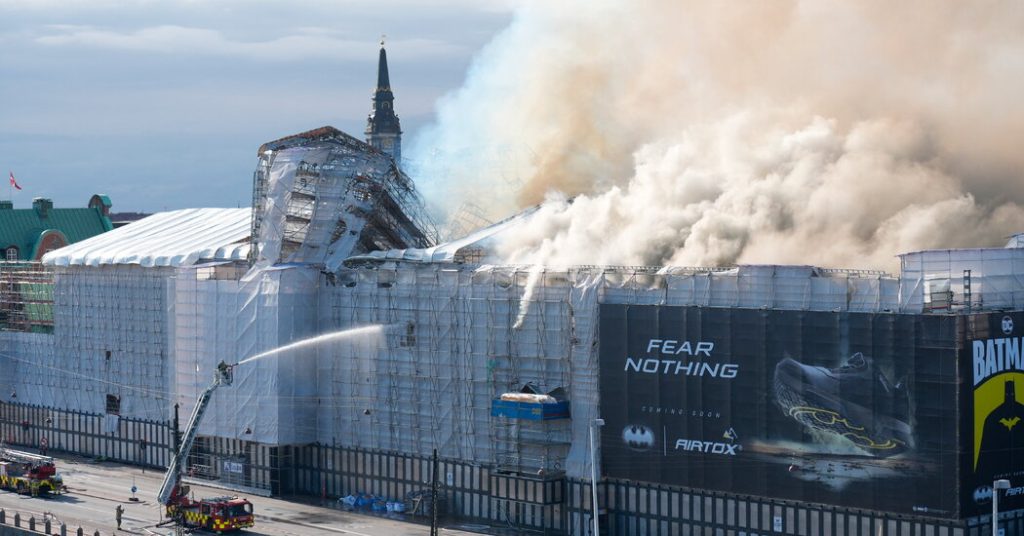The old stock exchange building in downtown Copenhagen, known for its distinctive spire of intertwined dragon tails, partially collapsed in a massive fire early Tuesday. It was unclear what caused the fire, but images and videos on social media showed flames on the roof and dark smoke engulfing the city. The building, known as Borsen, is one of Copenhagen’s oldest structures in Dutch Renaissance style, representing over 400 years of Danish history. The police evacuated nearby buildings and urged people to avoid the area while emergency responders advised keeping a safe distance from the fire due to smoke inhalation risks.
The 17th-century stock exchange building, which once served as Denmark’s financial hub, also housed valuable historical paintings and artifacts. City officials quickly removed these items as the fire raged, with one painting, Peder Severin Kroyer’s “From Copenhagen Stock Exchange,” requiring six people to carry it to safety. Culture minister Jakob Engel-Schmidt emphasized the significance of the artworks and the building itself in Danish history, noting its role in countless historical events and its deep connection to the national psyche. Several officials, including a member of Parliament, expressed sadness over the fire and called for the old stock exchange to be rebuilt in its original grandeur.
The building was originally constructed under the guidance of King Christian IV, who understood the importance of commerce and trade. The structure was designed with at least 40 market stalls and was strategically located near water to facilitate cargo unloading from ships. As firefighters battled the flames, onlookers gathered in shock on the streets, including Celeste Bolvinkil Andersen, who felt a deep sense of disappointment for not exploring the historic building before its destruction. The fire prompted a sense of witnessing history firsthand and highlighted the architectural and cultural significance of the old stock exchange in Copenhagen.
The destruction of the old stock exchange building drew attention to the historical and artistic treasures that were housed within its walls. The fire served as a reminder of the fragility of architectural heritage and prompted calls for greater efforts to preserve and protect such structures in the future. The loss of the building, with its unique spire and centuries-old history, reverberated across Denmark and sparked conversations about the importance of preservation and restoration of cultural landmarks. The sentiment of rebuilding the old stock exchange echoed among officials and the public, emphasizing the building’s symbolic value in Copenhagen’s architectural landscape.
While the cause of the fire remained unknown, the visual impact of the flames and smoke captured global attention through social media and news outlets. The dramatic scenes of the historic building engulfed in fire elicited a mix of emotions, ranging from shock and sadness to calls for action to restore and rebuild. As the flames continued to consume the old stock exchange, the outpouring of support and solidarity from the public underscored the significance of architectural heritage in shaping cultural identity and preserving collective memory. The incident served as a stark reminder of the importance of safeguarding historical structures and artifacts for future generations to appreciate and learn from.
As investigations into the fire’s cause continued, the focus shifted towards the recovery and restoration efforts for the old stock exchange building. The process of rebuilding the iconic structure presented an opportunity for community engagement and collaboration to ensure that the architectural gem would reclaim its place in Copenhagen’s skyline. The rebuilding of the old stock exchange became a symbol of resilience and unity, highlighting the city’s commitment to preserving its rich history and heritage. The fire, while devastating, also sparked a collective effort to honor the legacy of the building and its contributions to Danish culture and history, further enhancing its significance as a testament to the enduring spirit of the city and its people.


